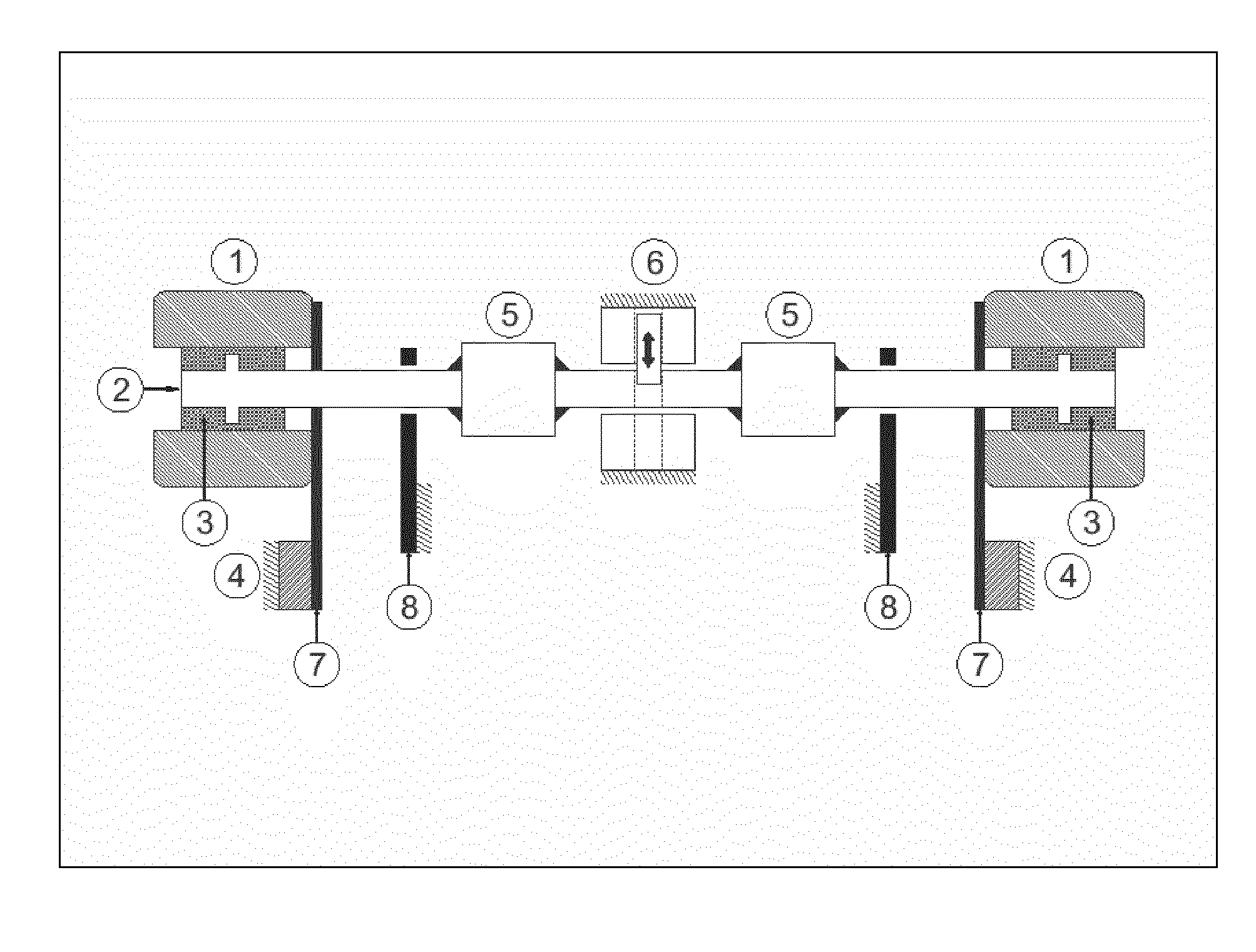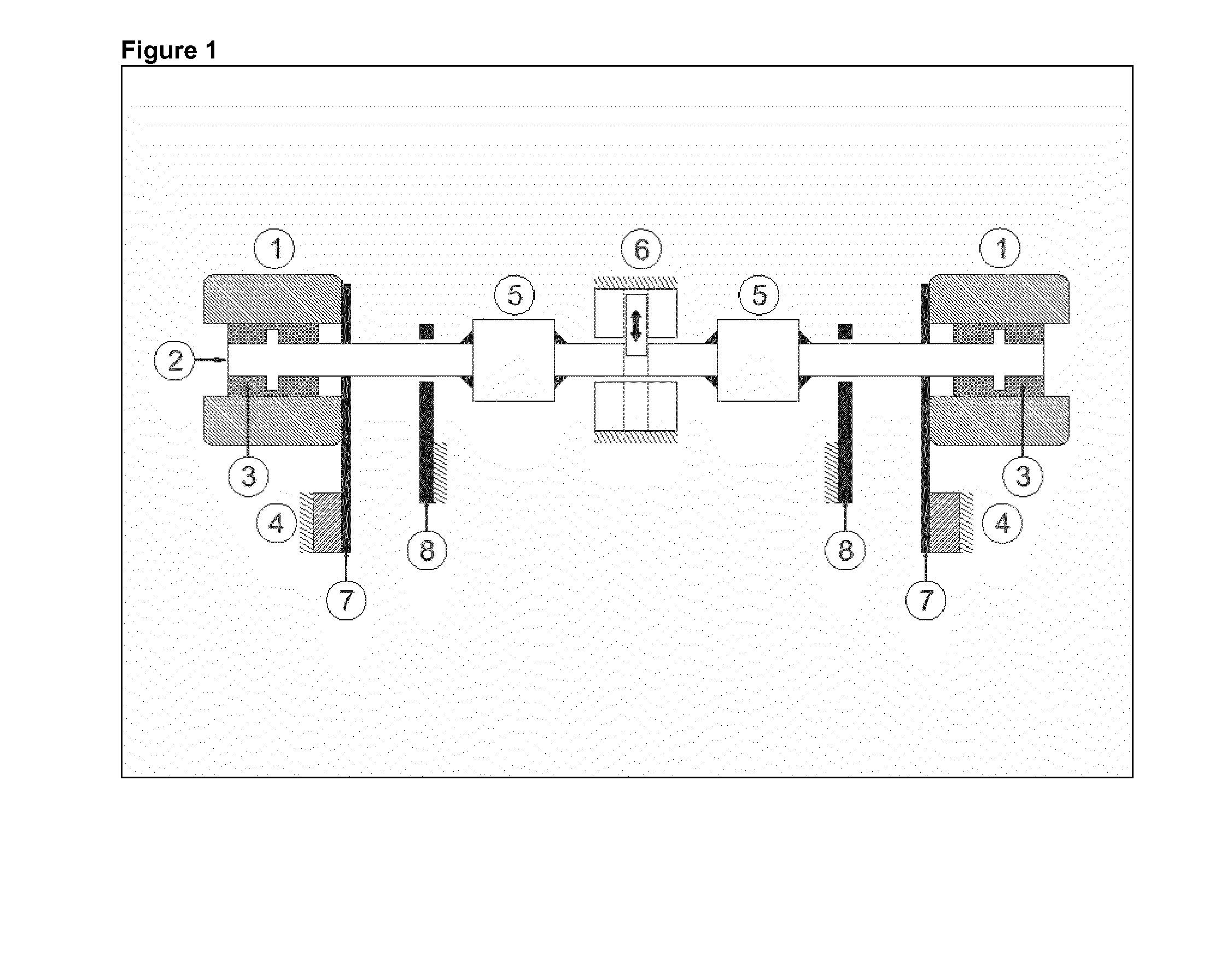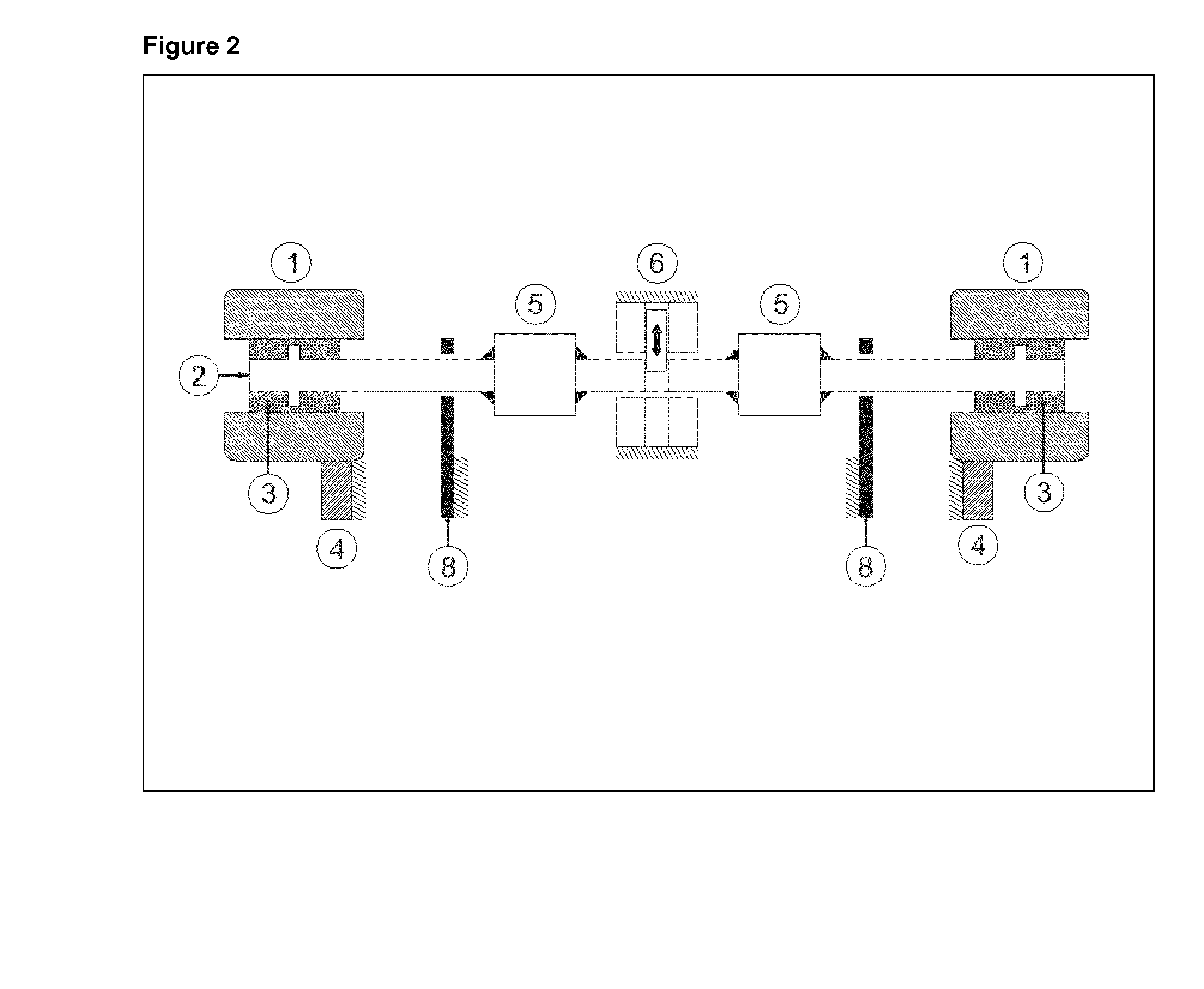Device for Cooperative Hand Function Trainings in Rehabilitation and Corresponding Method
- Summary
- Abstract
- Description
- Claims
- Application Information
AI Technical Summary
Benefits of technology
Problems solved by technology
Method used
Image
Examples
examples
[0073]The application of the device in the neurorehabilitation (e.g. stroke subjects) will be based on research studies to explore the effect of different manipulative tasks of both hands on the neuronal coupling / uncoupling of the two arms.
[0074]It is argued that by coupling manipulative movements of the hands by the device they become more efficiently performed. This is to be reflected in a stronger neuronal coupling of the arms on supraspinal and spinal levels (unilateral electrical stimulation of dig. II and V / ulnar nerve is followed by distinct reflex EMG responses in arm muscles of both sides).
[0075]A pilot study has been performed to asses if an unilateral nerve stimulation results in senseful bilateral arm muscle responses with the device of FIG. 1, by having the patient perform a movement equivalent to opening a bottle. FIGS. 5 and 6 show the task-specific EMG responses in hand flexor and hand extensor muscles on both sides following unilateral non-noxious ulnaer nerve stimu...
PUM
 Login to View More
Login to View More Abstract
Description
Claims
Application Information
 Login to View More
Login to View More - R&D
- Intellectual Property
- Life Sciences
- Materials
- Tech Scout
- Unparalleled Data Quality
- Higher Quality Content
- 60% Fewer Hallucinations
Browse by: Latest US Patents, China's latest patents, Technical Efficacy Thesaurus, Application Domain, Technology Topic, Popular Technical Reports.
© 2025 PatSnap. All rights reserved.Legal|Privacy policy|Modern Slavery Act Transparency Statement|Sitemap|About US| Contact US: help@patsnap.com



